Are you seeking the best condenser mic for your home studio or live performances? With so many options to choose from, it can get overwhelming to decide which one perfectly fits your needs and budget.
That is why I invite you to check out this review guide of the 11 top products to help you find the right fit. Let's get started!
Quick Answer
A good condenser mic will help to capture sound with greater sensitivity and detail. When it comes to buying one for vocals, you should keep the following factors in mind:
- Frequency response;
- Sensitivity;
- Background noise handling;
- Polar patterns;
- Budget.
Now the real deal is to pick a unit that ticks all the recommended check boxes. With years of experience in the audio industry, I have researched and reviewed the top 11 condenser mics.
Continue reading to learn about them in detail and also get insights into important considerations before putting your money into a product. Let's dive deeper into the world of vocals!
Comparison Chart for Best Condenser Mics
The table listed below shows a glimpse of the best condenser mics.
Microphone | Polar Pattern | Frequency Response | Details |
 | Cardioid | 20Hz - 20kHz | Price not available |
 | Uni-directional cardioid | 15Hz - 22kHz | |
 | Cardioid | 20Hz - 20kHz | $149.00 |
 | Unidirectional cardioid | 20Hz - 18kHz | $199.99 |
 | Cardioid | 20Hz - 20kHz | $99.00 |
 | 5 polar patterns | 20Hz - 20kHz | $1,029.99 |
 | Cardioid | 20Hz - 20 kHz | $299.00 |
 | Multi-pattern cardioid | 20Hz - 20kHz | $399.00 |
 | Cardioid | 20Hz - 20kHz | $277.39 |
 | Uni-directional cardioid | 20Hz - 20kHz | $240.00 |
 | Cardioid | 20Hz - 20kHz | $349.00 |
 | Cardioid | 30Hz - 16kHz | $54.99 |
After a quick overview of the best condenser mics, let's check each product in detail!
1. Overall Best Condenser Mic: Rode NT1 Kit
The following are the positives and negatives of the NT1:
Pros
- This mic features a 6061-strong aluminum build and nickel plate to resist corrosion.
- It offers a rich and smooth sound that is ideal for vocals as well as streaming.
- It silents the background noise well so it may not catch in the recordings.
Cons
- The weight management could be better.
The NT1 kit provides everything you need to start recording vocals. It bundles a premium cardioid condenser mic with a shock mount, pop filter, cables, and more. On top of that, an ultra-low noise mic makes it perfect for vocals and acoustic guitar. Overall, this is one of the best condenser mics recording packages.
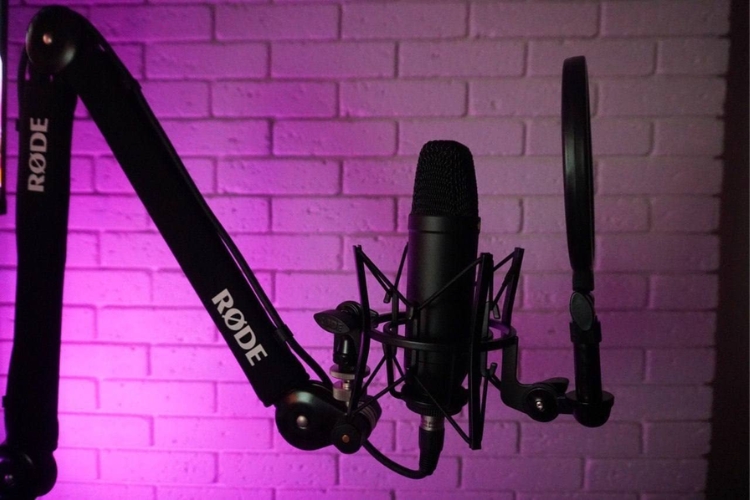
Features
Listed below are the features of this mic:
- One of the only mics with a complete recording kit.
- Has ultra-low 4.5 dB self-noise for clean recordings.
- A 1" Internal capsule shock mounting that reduces vibration noise.
- Comes with 1 year of warranty.
Specs
The following are the specs of the NT1:
Specs | Rode NT1 Kit |
Polar pattern: | Cardioid |
Frequency response: | 20 Hz - 20 kHz |
Sensitivity: | -29 dBV/Pa |
Impedance: | 100 ohms |
Dimensions: | 10.6 x 8.4 x 6.95 inches |
Weight: | 15.5 ounces |
2. Best USB Condenser Mic: Blue Yeti Microphone
The following are good and bad about this product:
Pros
- A plug-and-play feature that lets you start recording vocals directly from your PC.
- A Blue VO!CE feature that enhances the HD effect in your audio.
- The mic's four polar patterns offer you versatility both for recording and streaming.
Cons
- The nuts that hold the mic stand can be troublesome.
The Blue Yeti is an easy and trustworthy way to record or send high-quality sound. Also, you can fine-tune its virtual microphone system with four polar patterns.
Moreover, this condenser mic comes with all the professional recording options, including gain, mic mute, and headphones. Lastly, the company has equipped this microphone with Blue VO!CE feature to throw magic on your recordings.
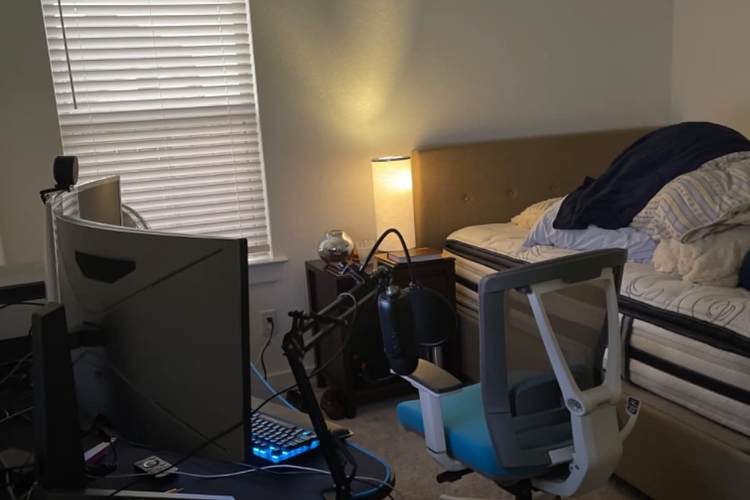
Features
Some of the features of the Blue Yeti that make it a great microphone for professionals are:
- Has a tri-capsular condenser array that allows it to record the best audio, regardless of any situation.
- It has studio-level controls like a built-in mute button and an audio monitoring option.
- The mic has a metal frame and thick base, making it reliable.
Specs
Here are the technical specs of this product:
Specs | Blue Yeti Microphone |
Polar pattern: | Uni-directional |
Frequency response: | 15 Hz - 22 kHz |
Sensitivity: | -33dBV/Pa |
Impedance: | 16 ohms |
Dimensions: | 4.92 x 4.72 x 11.61 inches |
Weight: | 3.51 pounds |
3. Best For Handling Rumbles: Audio-Technica AT2035
Let's uncover the advantages and drawbacks of the product:
Pros
- It has a crisp and clear audio quality for acoustic guitar and drum overheads-like instruments.
- There is a versatile cardioid polar pattern that rejects off-axis sounds.
- Includes custom shock mount to reduce vibrations.
Cons
- Requires 48V phantom power that can cost extra energy.
A mic that many Grammy award-winning artists have used, the AT2035 delivers incredibly clean and accurate sound reproduction. Its sensitive capsule effortlessly picks up the nuances and textures of your voice.
And with its solid all-metal construction, the Technica is a phantom power mic that is durable enough to offer one of the best-in-class experiences.

Features
The following are the features of the AT2035:
- A Cardioid polar pattern that rejects ambient noise and enhances the minute details of your voice.
- Has a high 148 dB sound pressure level (SPL) that handles loud singing/playing without distortion.
- It also features a pad to cut out a voice from loud sound sources and minimize rumbles.
Specs
Let's move on to the specs of the product:
Specs | Audio-Technica AT2035 |
Polar pattern: | Cardioid |
Frequency response: | 20 Hz - 20 kHz |
Sensitivity: | -33 dBV/Pa |
Impedance: | 120 ohms |
Dimensions: | 9.75 x 9.75 x 2.75 inches |
Weight: | 2 pounds |
4. Best Mic for Podcasts: TZ Stellar X2
The following are the perks and downsides of X2:
Pros
- It has a high-quality sound pickup that can help in recording fantastic podcasts.
- The mic comes with a sturdy metal build.
- Equipped with a high pass filter to reduce plosives and proximity effect.
Cons
- You may need a pop filter for vocal recording to avoid popping sounds.
The TZ Stellar X2 microphone is a cost-effective option for many professionals. Due to its wide variety of patterns, and high-quality audio reproduction, this microphone is ideal for broadcasting and has a strong structure.
Additionally, the mic's sensitivity is a full-on bloom that can capture even the minor details of your sound. However, it also gives a slight advantage in the form of recording popping sounds.
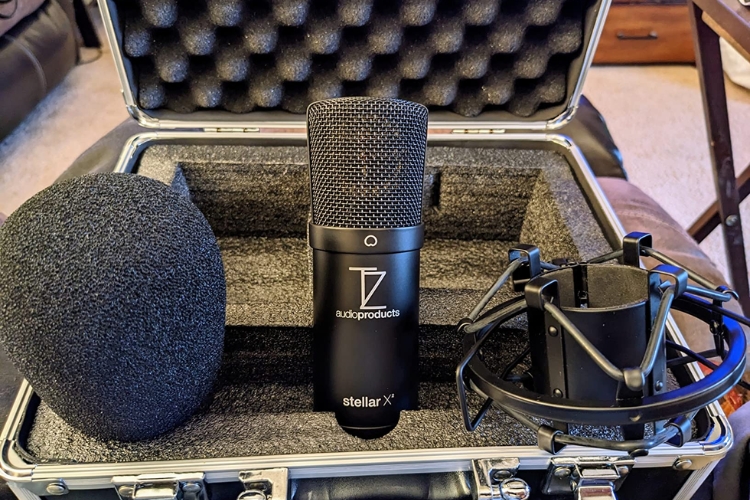
Features
Moving to the features of the product:
- It has a wide frequency response that captures vocal nuances.
- High max SPL handles loud sources without distortion.
- A foam wind cover that minimizes the background noise.
Specs
Here are the specs of the microphone:
Specs | TZ Stellar X2 |
Polar pattern: | Unidirectional cardioid |
Frequency range: | 20Hz - 18kHz. |
Sensitivity: | -31dBV/Pa |
Impedance: | 140 ohms |
Dimensions: | 11.38 x 9.65 x 4.84 inches |
Weight: | 12.2 ounces |
5. Best Streaming Microphone: Audio-Technica AT2020
Let's start with the pros and cons of the AT2020:
Pros
- The sound is undistorted, organic, and well-balanced.
- Comes with superior loudness management and extensive dynamic range.
- A mounting bracket and a carrying case are included in the package.
Cons
- The stand mount is not compatible with other standard mic clips.
This side-address studio condenser microphone holds its own base in terms of audio quality and adaptability. It gives your voice the note it needs to stand out in YouTube and Twitch streams.
Thanks to the cardioid polar pickup pattern, your audio will be picked up clearly in any recording or live performance. Plus, the company is generous enough to provide a shock mount to fit this condenser microphone strongly.
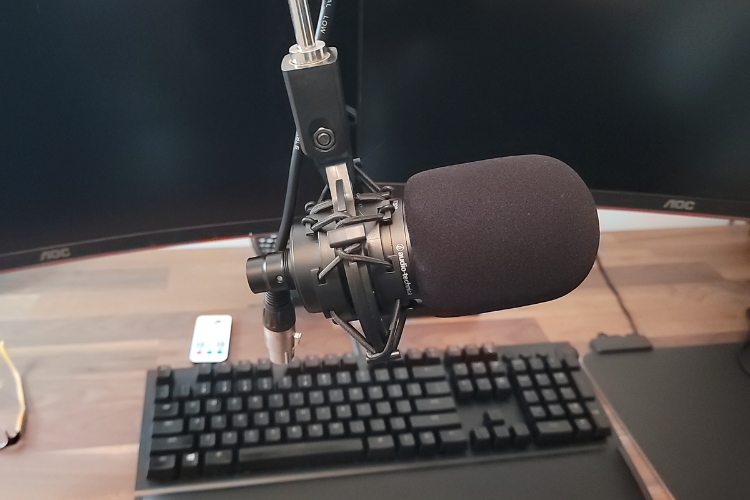
Features
The following are the top highlights of this mic:
- A side-address cardioid polar pattern that isolates vocals.
- A wired XLR cable to connect it to your system.
- 48 kHz sample rate for HD recording.
- A high dynamic range to differentiate between high and low sound volume.
Specs
These are the specs of the product:
Specs | Audio-Technica AT2020 |
Polar Pattern: | Cardioid |
Frequency Response: | 20 - 20,000 Hz |
Sensitivity: | -37 dBV/Pa |
Impedance: | 100 ohms |
Weight: | 1.32 pounds |
Dimensions: | 9.6 x 9.6 x 2.6 inches |
6. Best Entry-level Mic: AKG Pro Audio C414 XLII
Here are the perks and downsides of the product:
Pros
- Has a smooth, natural, and balanced sound quality with a slight presence boost.
- Comes with a solid design and construction.
- Included a shock mount, pop filter, windscreen, and protective case.
Cons
- Despite having a windscreen, it may pick up background noise or room reflections if not properly positioned.
C414 offers a clear and detailed vocal pickup. Thanks to the tailored frequency response and cardioid isolation, this reasonably priced mic provides a no-fuss entry-level experience to everyone. Moreover, it is also a large diaphragm condenser microphone that has a high SPL handling and a wide dynamic range.
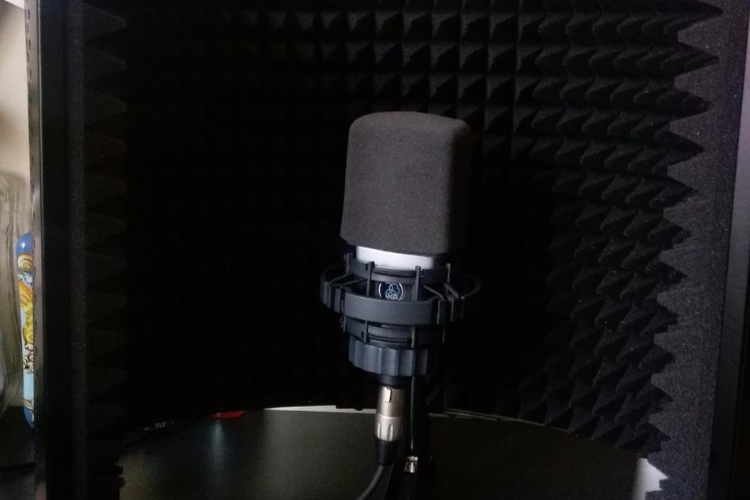
Features
The AKG Pro Audio C414 XLII has several features, given below:
- A base cut filter to cut the lower-end frequencies.
- 3 attenuation levels (-6/-12/-18) for lowering output for loud sound sources.
- A custom-tuned frequency response specifically optimized for vocals.
Specs
The AKG Pro Audio C414 XLII has the following specifications:
Specs | AKG Pro Audio C414 XLII |
Polar Pattern: | 5 patterns (Omnidirectional, wide cardioid, cardioid, hyper-cardioid, or figure-of-eight) |
Frequency Response: | 20 - 20,000 Hz |
Sensitivity: | -34 dBV/Pa |
Impedance: | 200 ohms |
Weight: | 300 g (10.6 oz) |
Dimensions: | 11.3 x 9.6 x 5.5 inches |
7. Best Overhead Mic: Audio-Technica AT4040
Before going into the details, here are the pros and cons of this microphone:
Pros
- Offers smooth and natural sound, perfect for overhead use.
- Can work in a close-in environment to handle voices of acoustic guitar.
- Can record in high-gain vocals, free from distortions.
Cons
- The bass boost of the mic may not suit all instruments like drum overheads.
With its excellent transient response, the AT4040 excels as a mic for drum overheads and percussion. Not only this, but you can also set this microphone in a close-in configuration (under the instrument of an acoustic guitar), and it will work fine. The cherry on top is that it has a high SPL handling that makes it suitable for acoustic guitar amps.
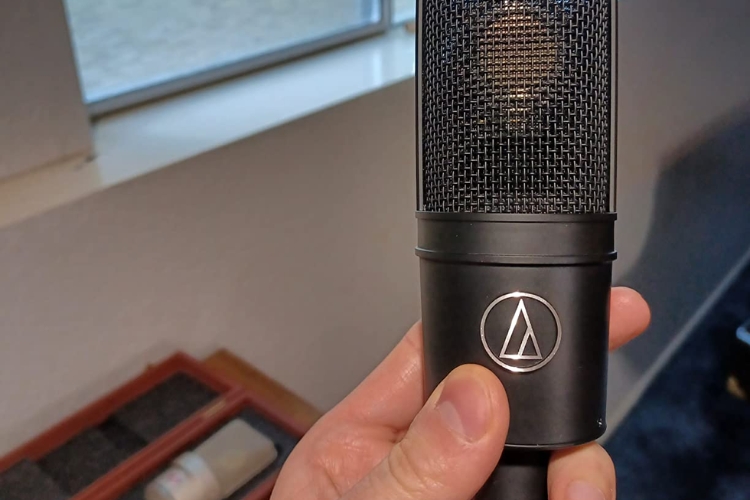
Features
The following list describes the salient characteristics of AT4040:
- A custom shock mount that reduces unwanted vibration noise.
- A 10dB pad for handling high SPL sources up to 150 dB.
- An XLR-type connectivity that uses cable for connection.
Specs
Listed below are the specs of this mic:
Specs | Audio-Technica AT4040 |
Polar pattern: | Cardioid |
Frequency response: | 20Hz-20kHz |
Sensitivity: | -34 dBV/Pa |
Impedance: | 200 ohms |
Dimensions: | 11 x 9.8 x 4.5 inches |
Weight: | 1 pound |
8. Best Instrument Mic: Rode NT2-A
Below are the positives and negatives of the microphone:
Pros
- A 15 feet long strong cable for connectivity.
- Has a vast dynamic range and can hold a range of vocals including those of instruments.
- The mic itself produces very low self-noise.
Cons
- It doesn't come with a hard case for protection.
With pristine audio quality and switchable polar patterns, the NT2-A excels for miking acoustic instruments and vocals. This mic has strong shock mounts and sound compared to the original Z version.
On top of that, the heavy-duty satin nickel finish ensures durability. Despite the lack of USB connectivity, an XLR cable provides a strong and reliable connection.
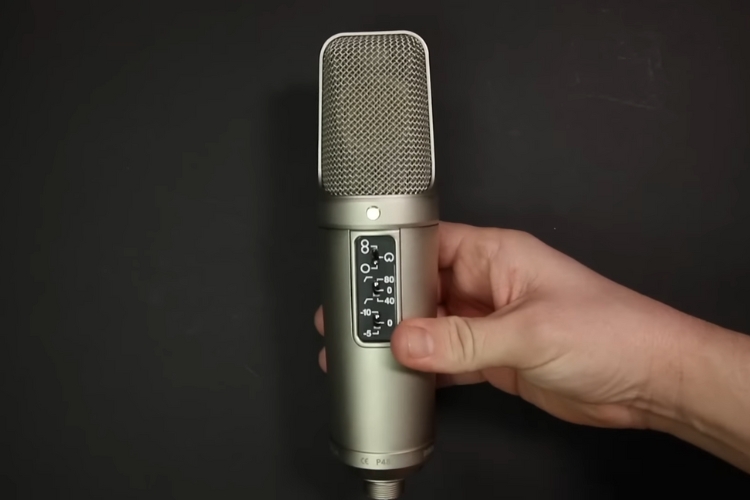
Features
The following are the features of the product:
- Supports a range of polar patterns, including switchable omni, cardioid, and figure-8 patterns.
- Uses a high pass filter and variable pad to minimize sounds and enhance audio.
- Comes with a 1-inch Internal capsule shock mounting that reduces handling noise.
Specs
Here are the specifications of the NT2-A:
Specs | Rode NT2-A |
Polar pattern: | Multi-pattern cardioid |
Frequency response: | 20Hz-20kHz |
Sensitivity: | -36 dBV/Pa |
Impedance: | 200 ohms |
Dimensions: | 10.65 x 8.65 x 6.85 inches |
Weight: | 5.59 pounds |
9. Best Handheld Mic: Lewitt LCT 440 Pure
The following are the positives and negatives of the 440 Pure:
Pros
- Versatile polar pattern options to capture high-profile sound.
- Records vocals full of bass and warm.
- The shock mount is made of plastic but is quite sturdy.
Cons
- These condenser microphones are battery-powered which limits their usage.
With a vintage handheld design and tailored condenser sound, the 440 Pure excels for live vocals. its switchable polar patterns can adapt to any situation. on top of that, its robust build and effective windscreen ensure reliability on and off stage. Overall, it is an excellent handheld condenser mic for live performances.
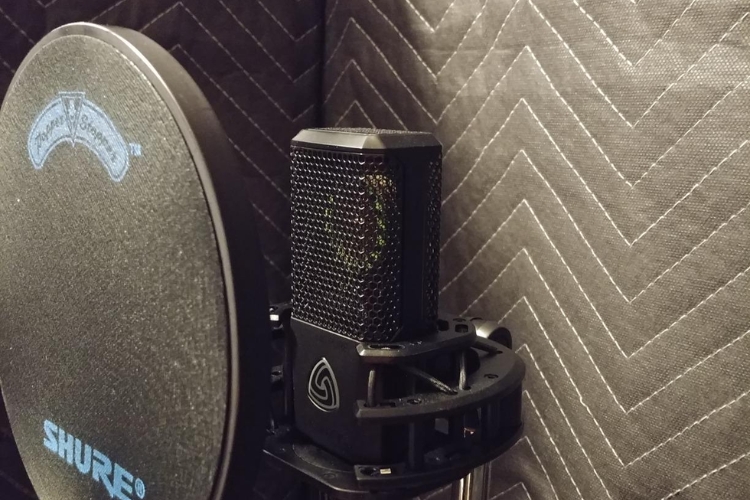
Features:
Let's discuss the features of this microphone:
- Has a 1" true condenser capsule to catch a clear sound.
- Comes with an integral filter and windscreen.
- Has metal construction for maximum road durability.
Specs
The following are the specifications of the product:
Specs | Lewitt LCT 440 Pure |
Polar pattern: | Cardioid |
Frequency response: | 20Hz-20kHz |
Sensitivity: | -31.2dBV/Pa. |
Impedance: | 110 ohms |
Dimensions: | 5.43 x 2.04 x 1.42 inches |
Weight: | 10.9 oz (310 g) |
10. Best Pencil Condenser Mic: Aston Microphones Origin
Check the pros and cons of the product below:
Pros
- Compact and lightweight pencil design that is easy to carry.
- Offers a crisp, clear sound that is also perfect for instruments with low noise.
- Provides excellent protection from proximity effects in the 2-meter range.
Cons
- There is no USB compatibility.
The Origin delivers studio-level sound quality with its compact pencil condenser design. Its custom pads and filters allow adapting to any loud as well as dim sound sources. Moreover, its elegant design makes it a perfect choice for home studio owners. Another plus point is that you can easily mount it on other stands.
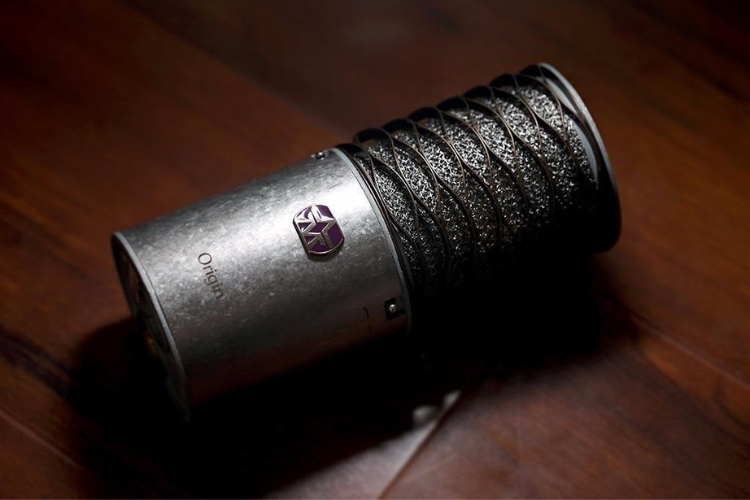
Features
The following are the features of the Aston:
- A large diaphragm condenser mic and a stand to hold the microphone.
- A 1-inch gold evaporated capsule that has a switchable pattern.
- Rugged stainless steel body for durability.
Specs
Discover the specs of the product below:
Specs | Aston Microphones Origin |
Polar pattern: | Uni-directional cardioid |
Frequency: | 20Hz-20kHz |
Sensitivity: | -32.8 dBV/Pa |
Dimensions: | 10 x 5 x 4 inches |
Weight: | 1.25 pounds |
11. Best for Studio Vocals: Shure SM27
Let's see what this product offers in terms of pros and cons:
Pros
- Offers optimized sound clarity for indoor studio performances.
- Can handle both distorted and clean vocals.
- A large diaphragm enhances its sensitivity toward weak vocals.
Cons
- The build quality of the plastic holder could be improved.
With its tailored frequency response, the SM27 exceeds features like warm, smooth studio vocal recording. The built-in pop filter eliminates plosives for clean audio. Additionally, a swivel adapter is handy if you want to rotate this mic 360. Compared to other dynamic mics of the Shure series, this mic doesn't require a lot of clean gains.

Features
These are the features of SM27:
- Consistent cardioid polar pattern for isolation and enhancement of sound.
- There are integrated three-stage pop filters to eliminate plosives.
- A dense steel mesh grill for durability.
- Works with your voice to activate the recording vocals, remotely.
Specs
The following are the specs of this mic:
Specs | Shure SM27 |
Polar pattern: | Cardioid |
Frequency response: | 20Hz-20kHz |
Sensitivity: | -37 dBV/Pa. |
Impedance: | 150 ohms |
Dimensions: | 4.63 x 8.25 x 10.88 inches |
Weight: | 2 pounds |
12. Best Budget Condenser Mic: MAONO AU-A04
Let's explore the pros and cons of the product:
Pros
- The affordable price makes it accessible to everyone.
- Plug-and-play USB mic.
- Clear and detailed sound with human vocals.
Cons
- Sometimes there can be hiccups during high sound pressure levels.
With USB connectivity for easy plug-and-play use, the AU-A04 brings condenser microphone quality to entry-level users. This large diaphragm condenser mic provides focused sound capture. Similarly, its low price point makes it a great budget home studio condenser mic.
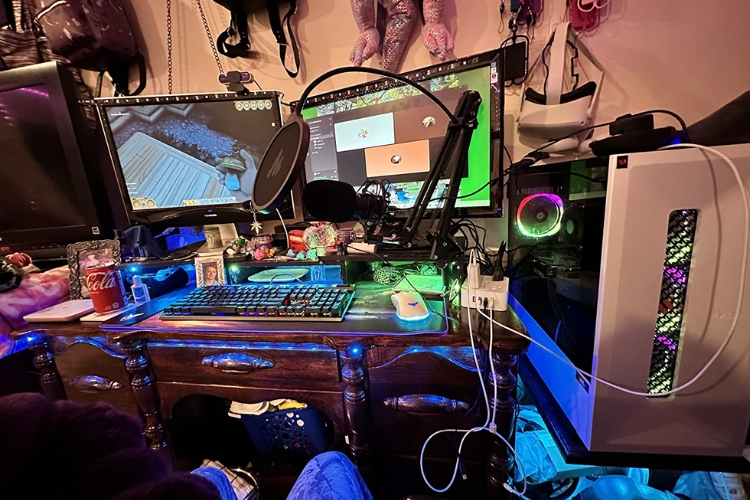
Features
The following are the features of the microphone:
- Equipped with a metal body that makes it strong and durable.
- Convenient USB output to connect it directly to PC and Mac.
- The package includes a tripod desk stand, USB cable, shock mount, stand, and filter.
Specs
Let's have a look at the specifications of the A04:
Specs | MAONO AU-A04 |
Polar pattern: | Cardioid |
Frequency response: | 30Hz-16kHz |
Sensitivity: | -38dBV/Pa |
Impedance: | 32 ohms |
Dimensions: | 17.28 x 8.23 x 3.5 inches |
Weight: | 2.97 pounds |
6 Factors that You Should Definitely Consider While Buying a Condenser Mic
When searching for the best condenser mic to suit your needs, there are several key factors to consider. Let's check them out in detail:
1. Sound Quality
Your priority in purchasing a condenser mic is to achieve high-quality audio recording and playback. This guarantees that the full range of your voice or instrument like drum overheads will be captured in your recording vocals.

The Audio-Technica AT2035 is a great example of a microphone with a wide frequency response (20 Hz to 20 kHz) and little self-noise.
2. Intended Use
For what do you plan to utilize the microphone primarily? Studio recordings, live shows, online broadcasts, and podcasts all have their own unique specifications. A high-quality microphone is essential for any vlogger, podcaster, or vocalist who wants to capture every nuance of their performance.
Similarly, an accurate and flexible microphone for recording instruments is a must-have for every musician or producer. Moreover, you should also have to watch the accessories that come with these condenser microphones.
3. Polar Patterns
The sensitivity of a microphone to sound coming from different directions is defined by its polar pattern. The polar pattern is the shape of the area where the microphone picks up sound. Common occurrences include:
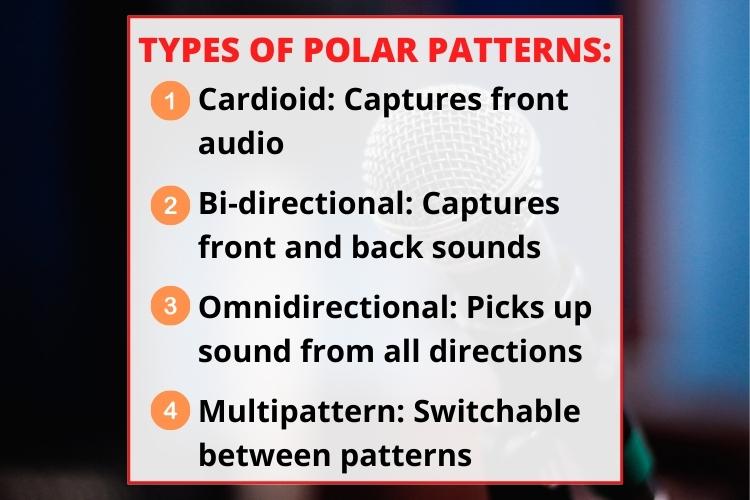
- Cardioid: Transmits just front-facing audio.
- Bi-directional: Captures both forward and reverse sounds.
- Omnidirectional: Captures sounds from all directions uniformly and omnidirectionally.
- Multipattern: Can switch between different patterns.
4. Frequency Response (FR)
The (FR) represents the microphone's ability to pick up sounds at all audible frequencies. The most normal reaction is one that is broad and flat. However, enhanced highs and lows may be desirable in some contexts.
- For human speech, the optimal value lies between 85 Hz – 255 Hz.
- Low instrument recording ranges between 41 Hz – 300 Hz.
- The higher instrument recording can go up to 20 KHz.
High-quality condenser microphones will have a broad frequency response, recording a wide range of sounds accurately and without distortion.
5. Compatibility and Connectivity
Think about the several ways you can hook up the microphone. Plug-and-play convenience makes USB microphones like the Blue Yeti a good choice for novice users and those without access to advanced audio interfaces.
However, microphones with XLR connections, such as the AT2035, offer greater versatility in complex settings and recording vocals in studios.
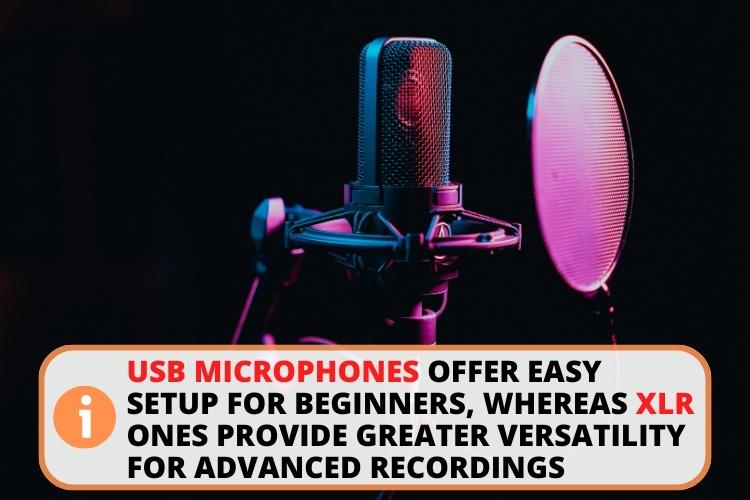
6. Your Budget
Determine your budget for the microphone before doing anything else. It is one of those factors that may impact your buying decision. Prices for condenser microphones vary widely from far under $100 to well over $1,000.
While there are inexpensive solutions like the Blue Yeti, keep in mind that spending a little more will result in far superior sound quality and durability.
FAQs
Neumann TLM 103 or Node NT1 are the best vocal condenser microphones.
Yes, condenser microphones are good for recording vocals due to their sensitivity and ability to capture subtle tones.
A good condenser mic for vocals costs $250-$500. The Rode NT1 or Audio-Technica AT4040 are good options under $500.
Yes, a condenser mic is a good option for rap vocals as it can handle the dynamics and capture the nuances of a rapper's delivery.
Conclusion
The final say is that the best condenser mic can help to enhance sound capturing quality. When choosing the one for yourself, consider key factors like polar response, recording vocals, sensitivity, noise handling, and price. Don't put your money into a product that costs a fortune and has less frequency response as it can affect instrumental recordings.
After researching and testing, I chose the Rode NT1 Kit as a top product for best condenser mics. It has a complete accessory package for audio recording. Moreover, it has a smooth and ideal voice for vocals and streaming.
The Rode NT1 Kit is a voice kit with amazing sounds. Not only its build quality is sturdy, but it also removes background noises. All-in-all, a complete package for vocal artists and instrument players.
